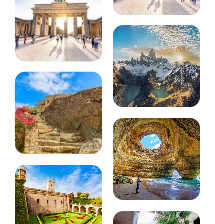
Discover the 8 best spas in France for relaxing
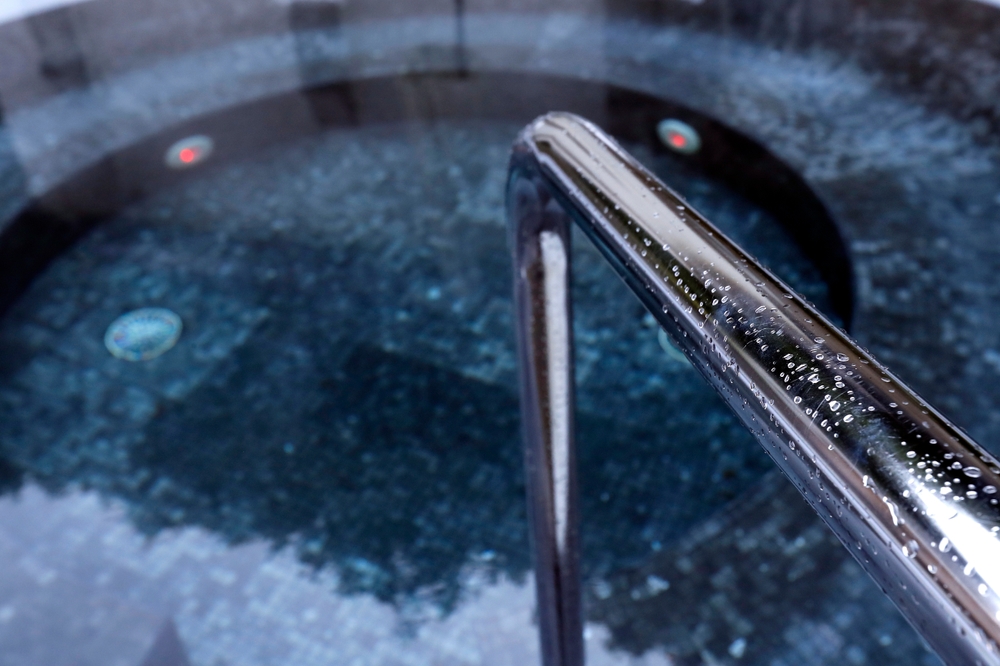
France has more than a hundred spas throughout the country, offering cures and treatments renowned for their therapeutic virtues. From the mountains to the seaside, these wellness destinations attract thousands of spa-goers every year in search of relief from aches and pains or simply relaxation. Here is our selection of the 8 best spas in France, true havens of peace where natural mineral water and an exceptional heritage combine to enhance your well-being.

Also read the Vichy guide:
- Top 5 activities in Vichy
- Top 6 best hotels in Vichy
- Top 10 culinary specialities in Vichy
- 7 unusual romantic weekends around Lyon
- 20 must-see weekend ideas around Lyon
- 18 must-do things to do in Auvergne
- Sleeping in the Auvergne volcanoes: 8 places to stay
- The 12 most beautiful villages in the Cantal and well worth a visit
1. Vichy: queen of the spa towns
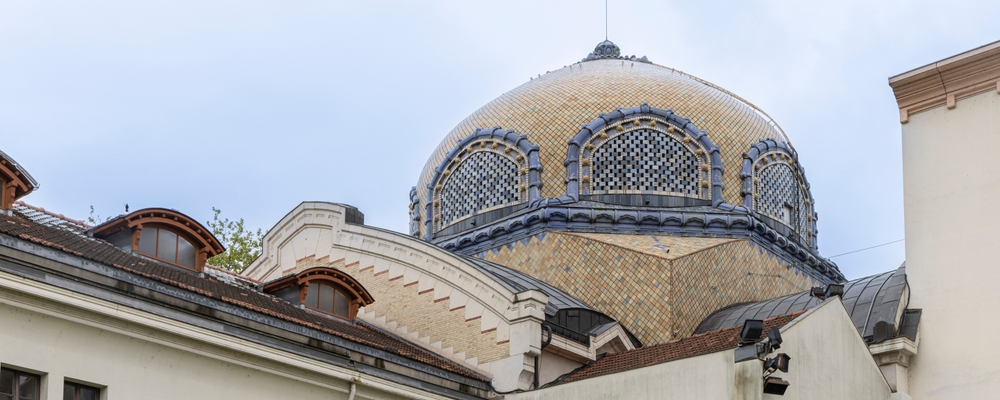
The French spa capital, Vichy in the Allier region, is the epitome of the French spa lifestyle. Listed on UNESCO’s World Heritage List as one of Europe’s “Great Spa Towns”, this exceptional destination has attracted a prestigious clientele for centuries to enjoy its beneficial springs. Napoleon III himself contributed to the town’s reputation by staying here regularly.
The Thermes de Vichy now comprise two establishments: the Thermes Callou and the Thermes des Dômes. Open from Monday to Saturday, they offer spa treatments for rheumatology, digestive disorders and metabolic diseases. Vichy’s thermal water, one of the most mineralised in France, gushes out naturally at temperatures ranging from 15 to 74°C, depending on the source.
Download the audio tour to discover Vichy on foot and on your own
To round off your spa break, don’t hesitate to visit Vichy by following our audio-guided itinerary. Discover the 27 places of interest in this Belle Époque town, from the majestic Hall des Sources to the Palais des Congrès-Opéra, via the splendid villas of the “Golden Triangle”. The town’s exceptional architecture, the Parcs d’Allier and the lake will charm you as much as its healing waters. Let us guide you through the fascinating history of this emblematic spa town, which has welcomed some of the world’s greatest personalities.
2. Dax: France’s leading spa town
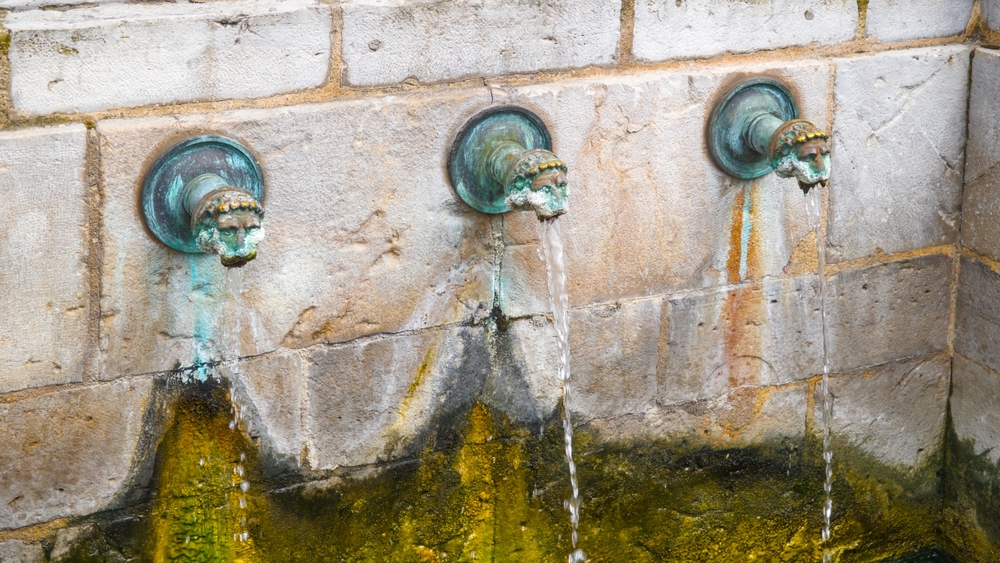
In the Landes département, Dax and Saint-Paul-lès-Dax have the largest concentration of thermal baths in France, with no fewer than 16 centres. This Landes spa destination welcomes more than 60,000 visitors every year, attracted by its famous thermal mud, the only one of its kind in the world, known as ‘péloïde’.
What makes Dax so special is its thermal peloid, a mud obtained after a maturing process lasting several months in the mineral-rich thermal waters. Applied as warm poultices, this mud has exceptional anti-inflammatory and analgesic properties, and is particularly effective in relieving rheumatic conditions, osteoarthritis and chronic pain. The thermal waters of Dax, naturally warm and hyperthermal (60°C on emergence), are also used in phlebology.
Among the most renowned establishments are the Thermes Adour, the Thermes de Christus, the Thermes Borda and the Thermes Bérot. Each offers modern facilities and treatment protocols tailored to different pathologies.
3. La Roche-Posay: the benchmark in spa dermatology
Located in the Vienne department in the Nouvelle-Aquitaine region, La Roche-Posay has established itself as the benchmark dermatological spa in France. For over five centuries, its thermal waters with their unique soothing properties have been used to treat skin ailments.
The La Roche-Posay Thermal Spa specialises exclusively in dermatology. Its thermal spring water, which has a low mineral content but is rich in selenium and silicates, has exceptional healing, soothing and anti-inflammatory properties. It is particularly effective in treating eczema, psoriasis, the after-effects of burns, the effects of skin cancer treatment and many other dermatological conditions.
Every year, the spa welcomes almost 10,000 people and offers treatment protocols tailored to each pathology: sprays, thread-like showers, baths, local applications or pool treatments. The La Roche-Posay cosmetics brand, developed from thermal spring water, also enables the benefits of the cure to be extended to the home. The village of La Roche-Posay, with its medieval castle and picturesque streets, offers a pleasant setting for a restorative spa break.
4. Balaruc-les-Bains: the Mediterranean spa gem
Balaruc-les-Bains in the Hérault department is the only spa resort on the shores of the Mediterranean and enjoys a privileged location on the banks of the Etang de Thau, opposite Sète. Classed as France’s leading spa in terms of capacity, it welcomes almost 50,000 spa visitors every year.
The Balaruc-les-Bains spa, with its ultra-modern 15,000 m² of technical facilities, specialises in the treatment of rheumatology and phlebology. Its thermal waters, among the hottest and most mineralised in Occitanie, emerge at 49°C and contain a high concentration of trace elements. This exceptional mineral richness makes it particularly suitable for osteoarticular and venous pathologies.
The Mediterranean setting offers a sunny climate all year round, ideal for making the most of your spa treatment. The facilities include five 1,000 m² group treatment pools, seven individual hydrotherapy areas and a relaxation and wellness area. The proximity of the sea and the Thau Basin also means you can discover the wealth of local gastronomic delights, including Bouzigues oysters.
5. Évian-les-Bains: the spa resort on Lake Geneva
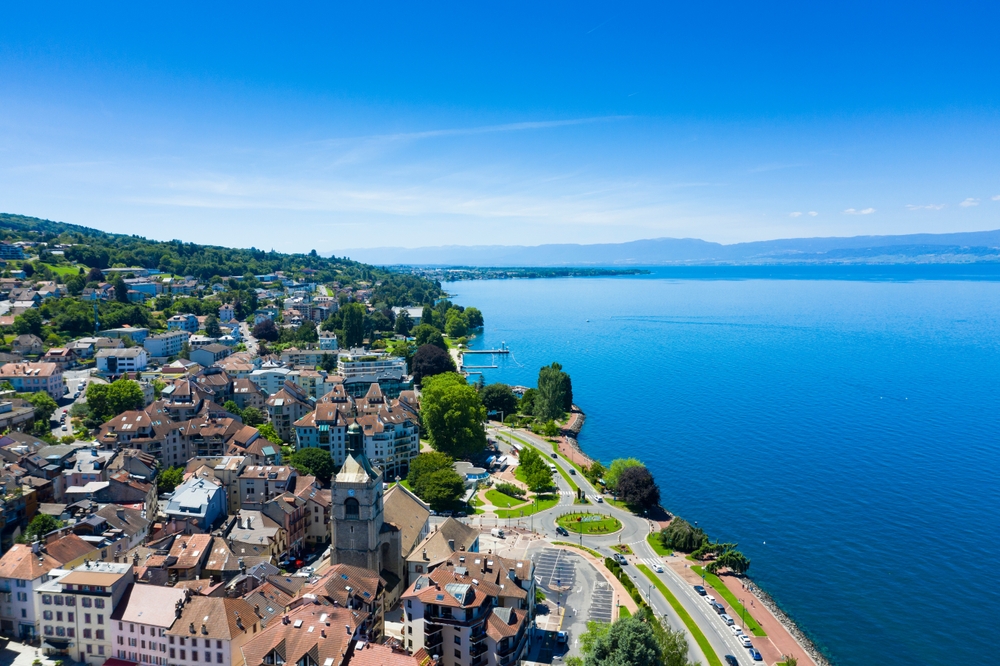
World-famous for its bottled mineral water, Évian-les-Bains in Haute-Savoie is much more than just a brand name: it’s a truly prestigious spa town, nestling on the shores of Lake Geneva facing the Swiss Alps. Since 1827, the town has been exploiting the therapeutic virtues of its natural mineral water.
The Thermes d’Évian offer spa treatments for rheumatology, urinary disorders and metabolic diseases. Evian mineral water, of the calcium and magnesium bicarbonate type, is renowned for its exceptional purity and balanced mineral composition. It is particularly indicated for digestive disorders, kidney ailments and joint problems.
The enchanting setting of Évian-les-Bains, with its Belle Époque palaces, lush gardens and breathtaking views of Lake Geneva and the mountains, makes it a top-of-the-range spa destination. The town also offers a wide range of cultural and sporting activities, including a casino, golf, water sports, hiking and boat trips on the lake.
6. Amélie-les-Bains: the jewel in the crown of the Catalan Pyrenees
In the heart of the Vallespir region of the Pyrénées-Orientales, Amélie-les-Bains-Palalda is a charming spa resort that combines therapeutic effectiveness with the mildness of the Mediterranean. Situated 45 minutes from Perpignan and close to the Spanish border, this destination enjoys a privileged climate and unspoilt natural surroundings.
The thermal baths at Amélie-les-Bains, with their magnificent Roman-style buildings covering 7,000 m², specialise in rheumatology and the respiratory tract. The thermal waters, of the sodium chloride bicarbonate sulphur type, emerge at between 35 and 55°C. They are particularly effective in treating osteoarthritis, inflammatory rheumatism, as well as ENT and bronchial disorders.
The exceptional architecture of the Roman Baths, with their majestic vaults and columns, creates a unique atmosphere conducive to relaxation. Visitors can also take advantage of the Thermal Spa for additional well-being treatments. The surrounding region offers a wealth of opportunities for discovery, including the hilltop villages of Vallespir, the abbey of Saint-Martin-du-Canigou and hiking in the Canigou massif.
7. Cauterets: thermal baths in the heart of the Pyrenees National Park
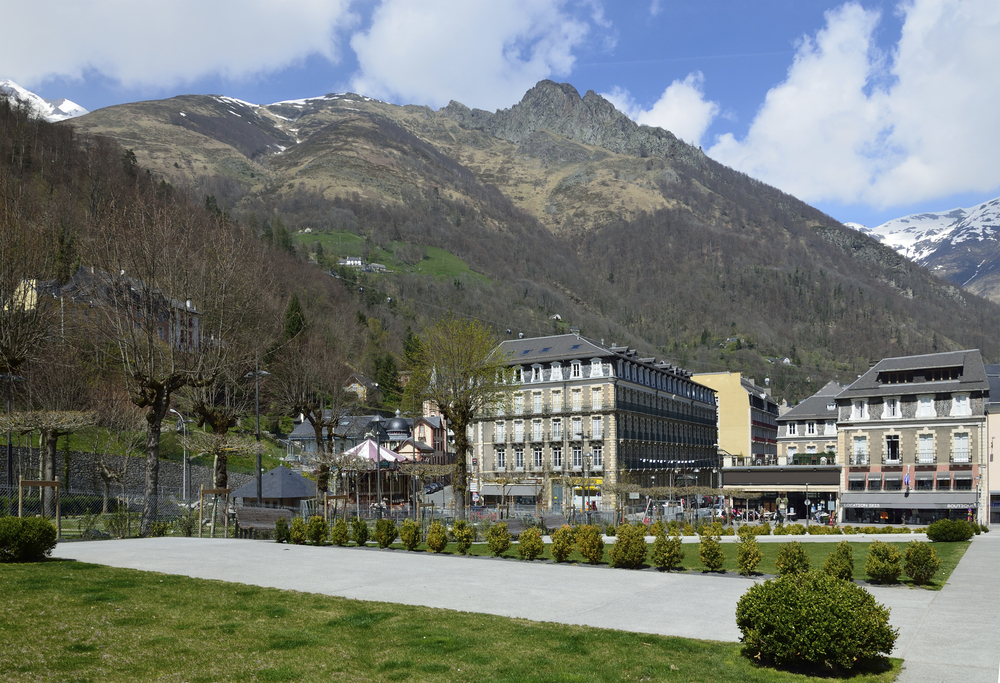
Perched at an altitude of 950 metres in the Hautes-Pyrénées, in the heart of the Pyrenees National Park, Cauterets is an exceptional mountain spa resort. This unique destination combines traditional spa treatments with mountain activities, in summer and winter alike.
Cauterets has two thermal baths: the Thermes de César and the Pavillon des Enfants, specially designed for young spa-goers. The resort specialises in rheumatology and the respiratory tract. Its deep-lying, alkaline, sodium-sulphide thermal waters gush out naturally at between 55 and 60°C and have an exceptional mineral content, particularly suited to chronic ENT and bronchial ailments.
The exceptional mountain environment of Cauterets offers pure, invigorating air, ideal for respiratory cures. To complement their treatments, spa visitors can take advantage of the Les Bains du Rocher spa and leisure centre, with its indoor and outdoor thermal pools. The resort also offers a wide range of activities, including hiking to Lac de Gaube and Pont d’Espagne, skiing in winter, and exploring the surrounding waterfalls and glacial cirques.
8. Aix-les-Bains: the Riviera of the Alps
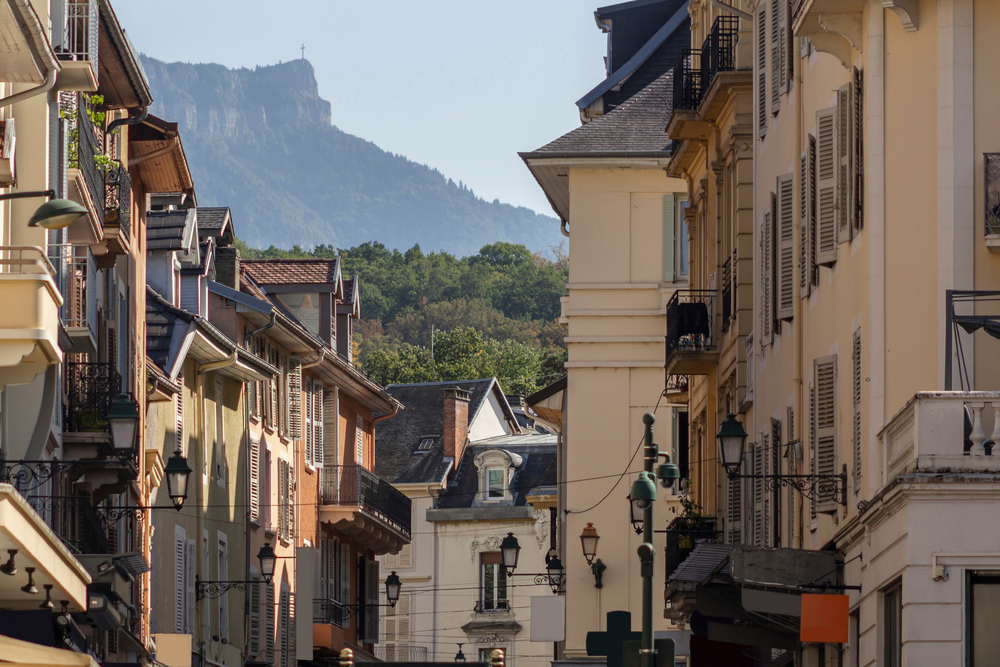
Nestling in Savoie, on the shores of Lac du Bourget and at the foot of the mountains, Aix-les-Bains is one of the oldest and most popular spas in the French Alps. Its spa history dates back to Roman times, as evidenced by the remains of the ancient thermal baths that can still be seen today.
The town has two major spas: Thermes Chevalley and Thermes de Marlioz. These centres offer treatments for rheumatology, phlebology and the respiratory tract. The Aix-les-Bains thermal waters, of the sulphuric-calcium type, gush out naturally at 45°C and are particularly effective in relieving joint pain, circulatory problems and respiratory ailments.
The exceptional setting of Aix-les-Bains, between lake and mountains, offers plenty of opportunities for complementary activities: walks on the shores of Lac du Bourget, hikes in the Bauges massif, or discovering the town’s Belle Époque architectural heritage. To discover this Savoyard destination, follow our itinerary to visit Aix-les-Bains and its heritage treasures.
200 audioguided tours for cities all around the world
DownloadIn conclusion, France’s spas offer much more than just medical cures: they offer genuine wellness breaks in exceptional settings, from the seaside to the Alpine peaks. Whether you’re looking for relief from rheumatic pain, improved venous circulation, a dermatological treatment or simply a relaxing break, these eight spa destinations are sure to meet your expectations. Don’t hesitate to consult your doctor to find out which spa is best suited to your needs. To extend your discovery of France’s spa heritage, explore our audio tour of Vichy, a veritable jewel of Belle Époque spa architecture.
FAQ
How long does a spa treatment last in France?
A spa treatment under agreement must last 18 days (3 weeks), from Monday to Saturday. This duration has been defined by the Social Security to guarantee the therapeutic effectiveness of the treatments. There are also free mini-cures of 5, 6 or 12 days for those who wish to discover spa treatments without a doctor’s prescription.
How much does a subsidised spa treatment cost?
For an 18-day spa treatment under agreement, the Social Security system covers 65% of medical and spa costs (spa doctor’s fees and spa package). The remaining co-payment is approximately 150 to 200 euros, depending on the treatment. Accommodation and meals are not covered, except in the case of a long-term illness (ALD), where a fixed contribution may be granted.
When is the best time to take a spa cure?
Most spas are open from February-March to November-December. High season is generally between April and October. To avoid the crowds and benefit from lower accommodation prices, opt for the mid-season periods (April-May or September-October). Some mountain resorts, such as Cauterets, also allow you to combine a spa treatment with winter activities.
Is it possible to have a spa treatment without a doctor’s prescription?
Yes, it is possible to take a free spa cure (or mini-cure) without a doctor’s prescription. These short cures (generally 5, 6 or 12 days) are not covered by Social Security, but allow you to discover the benefits of spa treatments and recharge your batteries. On the other hand, a medical prescription from your GP is required for a subsidised 18-day spa cure.
What are the contraindications to spa treatments?
The main contraindications to spa treatments are: progressive conditions or those in an acute phase (inflammatory outbreak, ongoing infection), decompensated heart, kidney or liver failure, contagious infectious diseases, certain cancers that are progressing, and pregnancy in certain cases. Your GP will assess your state of health before prescribing a spa cure and will determine the most appropriate course of treatment for your condition.
200 audioguided tours for cities all around the world
Download